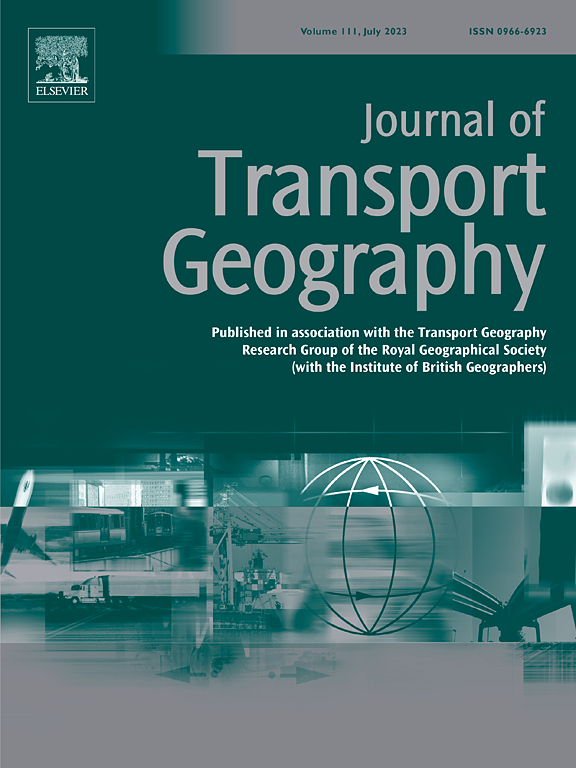Perceived accessibility: A literature review
IF 5.7
2区 工程技术
Q1 ECONOMICS
引用次数: 0
Abstract
The integration of accessibility measures into transport planning has become prominent in many regions. However, accessibility evaluation is hampered by not having a comprehensive view on how accessibility is perceived by various population groups and how it impacts their choices given certain transport and land use configurations. Recently, studies have emerged attempting to measure perceived accessibility and understand its determinants and how it relates to various aspects such as travel behaviour and social inclusion using a variety of definitions and methods. In this paper, we review the empirical research on perceived accessibility, aiming to provide structure to future research on this topic. Based on 45 studies discussing perceived accessibility, we find that the concept is often ambiguously defined, and that measures lack robust validation regarding capturing the core aspects of accessibility and perception at the individual level. Moreover, results regarding the links between socioeconomic characteristics and perceived accessibility lack consistency and validity. The relationship between perceived accessibility and travel-related outcomes remains underexplored and requires further investigation, including indirect and bidirectional effects. Based on this literature review and earlier conceptualizations, we construct an empirical research framework that paves the way for future research by proposing relationships between perceived accessibility, calculated accessibility, travel behaviour, residential choice, as well as individual sociodemographic characteristics and attitudes. Understanding how various population groups perceive accessibility is essential for developing more accurate land use and transport measures that impact their behaviour and well-being.
在许多地区,将无障碍措施纳入交通规划已变得十分重要。然而,由于无法全面了解不同人群对无障碍环境的看法,以及在特定的交通和土地使用配置下,无障碍环境如何影响他们的选择,因此无障碍环境评估受到了阻碍。最近出现了一些研究,试图通过各种定义和方法来衡量人们眼中的可达性,了解其决定因素,以及它与旅行行为和社会包容等各个方面的关系。在本文中,我们回顾了有关感知可达性的实证研究,旨在为今后有关该主题的研究提供结构性依据。基于 45 项讨论感知无障碍环境的研究,我们发现这一概念的定义往往模棱两可,在捕捉个人层面的无障碍环境和感知的核心方面,测量方法缺乏有力的验证。此外,有关社会经济特征与感知无障碍性之间联系的结果缺乏一致性和有效性。感知到的可达性与旅行相关结果之间的关系仍未得到充分探索,需要进一步调查,包括间接和双向影响。在文献综述和先前概念的基础上,我们构建了一个实证研究框架,通过提出感知的可达性、计算的可达性、旅行行为、居住选择以及个人社会人口特征和态度之间的关系,为未来的研究铺平了道路。了解不同人群如何看待可达性,对于制定更准确的土地利用和交通措施,从而影响他们的行为和福祉至关重要。
本文章由计算机程序翻译,如有差异,请以英文原文为准。
求助全文
约1分钟内获得全文
求助全文
来源期刊

Journal of Transport Geography
Multiple-
CiteScore
11.50
自引率
11.50%
发文量
197
期刊介绍:
A major resurgence has occurred in transport geography in the wake of political and policy changes, huge transport infrastructure projects and responses to urban traffic congestion. The Journal of Transport Geography provides a central focus for developments in this rapidly expanding sub-discipline.
 求助内容:
求助内容: 应助结果提醒方式:
应助结果提醒方式:


